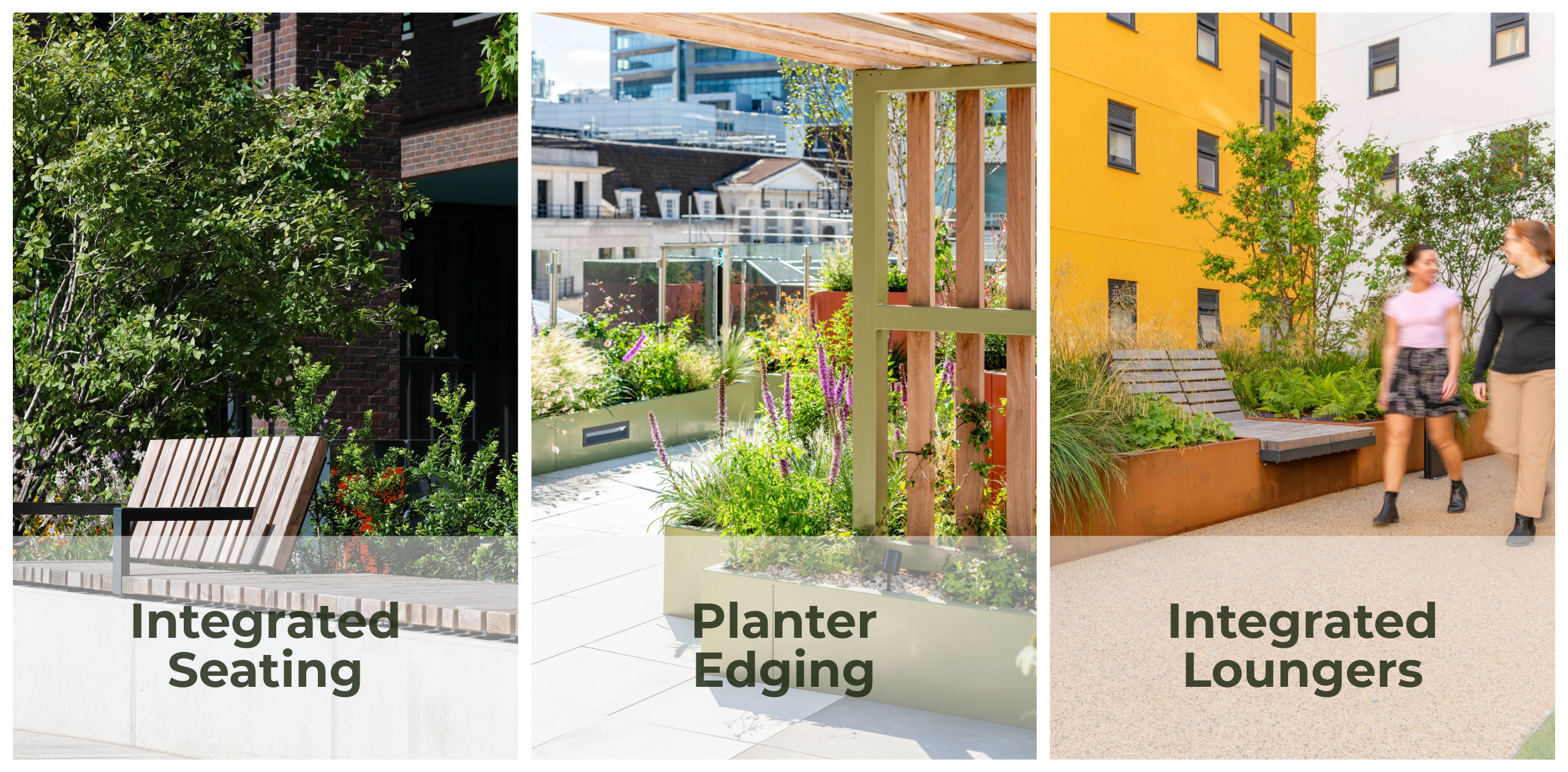
Modular design is transforming how we think about and create landscapes. At its core, it’s a philosophy that combines flexibility, efficiency, and creativity, allowing architects and designers to build extraordinary, bespoke spaces using adaptable, tried and tested components. From rooftop gardens to sprawling urban parks, modular systems offer a powerful framework for turning ambitious concepts into practical, beautiful realities.
This article explores the principles of modular design, its advantages, and how it integrates into contemporary landscape architecture.
Modular design refers to a system of construction or assembly in which standardized components can be combined in various configurations to create a finished product or outcome. In landscape architecture, systems that are proven, yet customisable allow for creative problem-solving without sacrificing design freedom. It’s not about limiting choices but rather about providing a foundation for confident decision-making.
At its best, modular design is a tool for amplifying creativity. By providing a reliable starting point, it frees designers to focus on the finer details that make a space truly unique.
Imagine a public plaza where seating and architectural planter edging are included to define areas of movement and rest. The design approach enables transitions between curved edges and linear pathways, creating a dynamic, flowing design. Whilst modular, the final aesthetic, layout, and feel of the space—whether minimalist or richly textured—remains entirely in the designer’s hands. By utilizing tried and tested components, the designer gains the assurance that each element will function perfectly, while still having the flexibility to adapt to the unique requirements of the space. This allows for a confident, creative approach, where the interplay between structure and form can evolve, but the core functionality is guaranteed.

Modular systems make it easier to respond to site-specific challenges. Whether working with limited space on a rooftop garden or designing a large urban park with varying levels and grades, modular components can be adjusted to fit into the design.
For example, a modular planter design can curve around the contours of a rooftop terrace or form linear boundaries for a pedestrian path. By adjusting the configuration, designers retain complete control over the spatial flow.
Sustainability is a growing priority in landscape architecture, and modular systems align naturally with this goal. Modular components can be refined for durability, and sustainability and their basic design principles reused and repeated from project to project.
Eco-conscious manufacturing processes also play a role, as manufacturing processes can be significantly refined to reduce waste and carbon impact.
Streamlining the Design Process
Modular systems significantly reduce the time required to conceptualize and execute complex designs. With efficient, repeatable components, they remove much of the uncertainty associated with bespoke construction. This streamlined approach enables designers to focus their efforts on the creative and strategic elements of their projects, knowing that the modular elements will perform reliably and integrate seamlessly.
While the modular approach offers numerous advantages, it’s important to implement it thoughtfully to ensure a cohesive and impactful design. Without careful planning, modular elements can appear overly uniform or out of place, detracting from the overall aesthetic. The key lies in combining customization with modularity, ensuring that each component is thoughtfully integrated into the surrounding environment. By selecting bespoke finishes, materials, and configurations that complement the site’s context, designers can avoid generic design outcomes and create a space that feels unique and purposeful.
Modular design is not about imposing limits—it’s about creating a framework that encourages creativity. For architects and designers, it offers a way to balance the demands of functionality, sustainability, and creativity. By combining precision-engineered components with bespoke and thoughtful configurations, systems that are standardised, yet customisable bring out the best in landscape design.
As the industry continues to evolve, systems that are proven yet adaptable will likely play an even greater role, enabling projects that are as dynamic and functional as the environments they inhabit.
The focus must remain on harnessing the confidence that tried and tested systems bring, without neglecting the creative flexibility and design freedom that the landscape architecture industry is renowned for.
Creating an extraordinary space?
It can be challenging to manage complex project interfaces and components, but it’s rewarding to see the results.